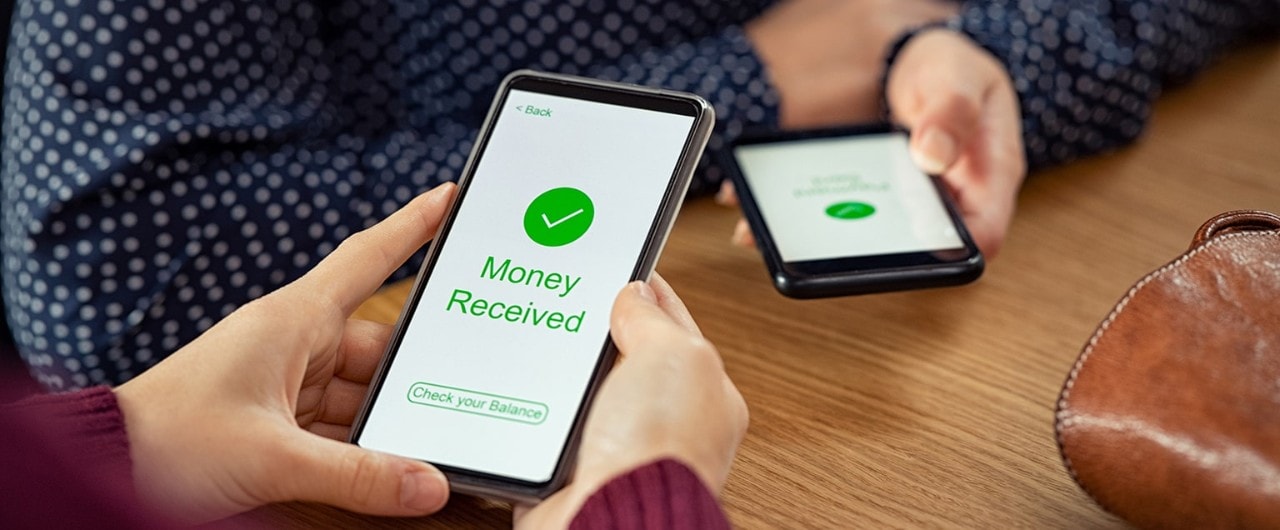

taking advantage of peer-to-peer services, with less risk
6 tips for avoiding fraud
In 2022, an estimated $893 billion was transferred directly from one person to another, discretely and remotely, via money-transfer services such as Venmo, PayPal, Google Pay, and Zelle.1 But not every one of those transfers landed well: of the 84% of consumers who have used peer-to-peer (P2P) payments services, 15% have been victims of scams.2
That fear of fraud prevents many from using a P2P service.
But opting for safety over convenience can lead to awkward situations. Lots of businesses and payment plans rely on P2P platforms. Betrothed couples request wedding gifts via P2P deposits. The friend who secured your theater ticket might ask you to repay via P2P.
The more people and organizations that request P2P payments, the greater the peer-to-peer pressure.
Know what you’re using: peer-to-peer payments in a nutshell
For those who are a little fuzzy on the P2P concept: Peer-to-peer payment systems enable consumers to send and receive money from their mobile devices or computers through linked bank accounts. You only need the email address or phone number of the recipient to make the transfer, and the app will remember that person for future transactions.3
So, say you’re having lunch with a co-worker and want to split the tab. You simply pull the person’s name from your contact list in the app – or add it using an email or phone number – and send the funds. Done and done.
Your co-worker can then transfer the money to a bank account or hold it in the app (most services work generally in this way).4
So, how do you avoid being the 15% who are scammed?
P2P systems follow safety procedures, such as encrypting the user’s financial information. Still, scammers have been able to access user accounts, so take precautions. These tips will help keep your P2P transactions safer.
1. Be choosey about the people you pay. Limit your money-transfer recipients to those you know well and trust. A scalper selling tickets outside the baseball stadium would not qualify. As a guideline, use only the phone numbers and emails familiar to you. If someone you’ve transferred with before asks you to send money to an unfamiliar number, hold off. That person’s account might have been hacked.
2. Double-check your cash recipient. Before hitting “send,” make sure the Joe you’re sending funds to is the Joe you intend. Nearly one quarter of P2P users have sent money to the wrong person. That figure escalates with frequency – 42% of those who transfer via P2P services multiple times a week have sent a payment to the wrong person.5
3. Don’t trust pushy peers. Treat surprise payment requests from institutions with suspicion – especially if the source uses scare tactics and urges you pay immediately. The information that appears on your caller ID can be faked to look like your bank or utility company. Do not respond at all; call the person or institution directly to research the request.6
4. Be careful about labeling. Some P2P services require their users to send messages with payments, such as “lunch with a co-worker.” Be mindful of scammers when wording these descriptions. Venmo, for example, automatically sets its user transactions as “public,” so others in your P2P network, and potentially hackers, could see what is entered. Check the service’s privacy settings to limit visibility.7, 8
5. Review the service’s fraud and protection policy. If your money is stolen from your P2P app, you may have little recourse. Banks and credit unions aren’t responsible for money lost to P2P scammers because customers make these payments themselves. Nor are P2P fund transfers protected by FDIC insurance. The one exception is Zelle, which partners with banks and credit unions and does not hold your money in a separate “Zelle” account.9, 10
6. Don’t stockpile money in the app. When someone sends you funds through a P2P app, the money sits in the app until you move it to a bank account. Move it as quickly as you can. In addition to mobile payment apps not being federally insured, it’s unclear what would happen to your funds if the P2P service provider files for bankruptcy protection or fails.11
Be P2P proactive with these resources
The transaction volume of P2P payment services is projected to climb to $1.6 trillion by 2027.12 Where there’s a big pool of money, you can expect some bad actors.
If you’re registering, or are registered, with a P2P app, take our precautionary steps. But first make sure you’re using the service that best matches your needs. You can compare different P2P options on Bankrate, here.
If you do experience issues with a payment app, you can submit a complaint with the Consumer Financial Protection Bureau.
Lastly, talk to your bank about the payment services it offers and for information on how to protect your finances. First Financial provides the latest in fraud awareness best practices here.